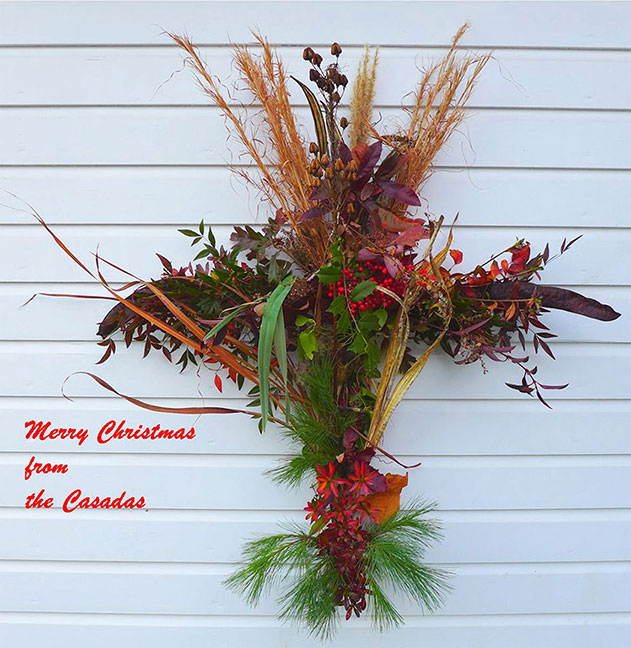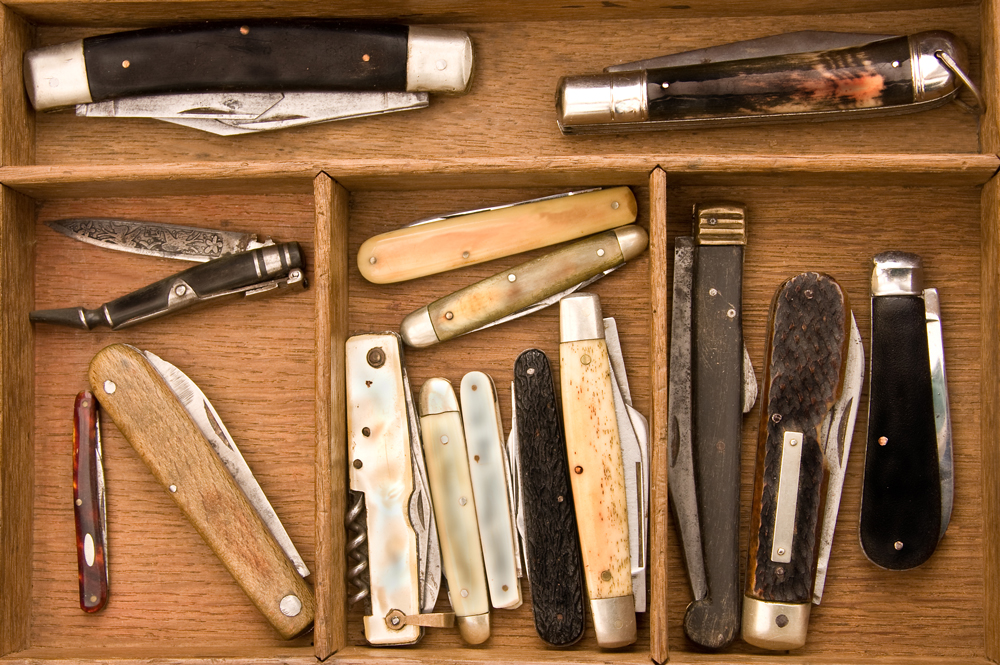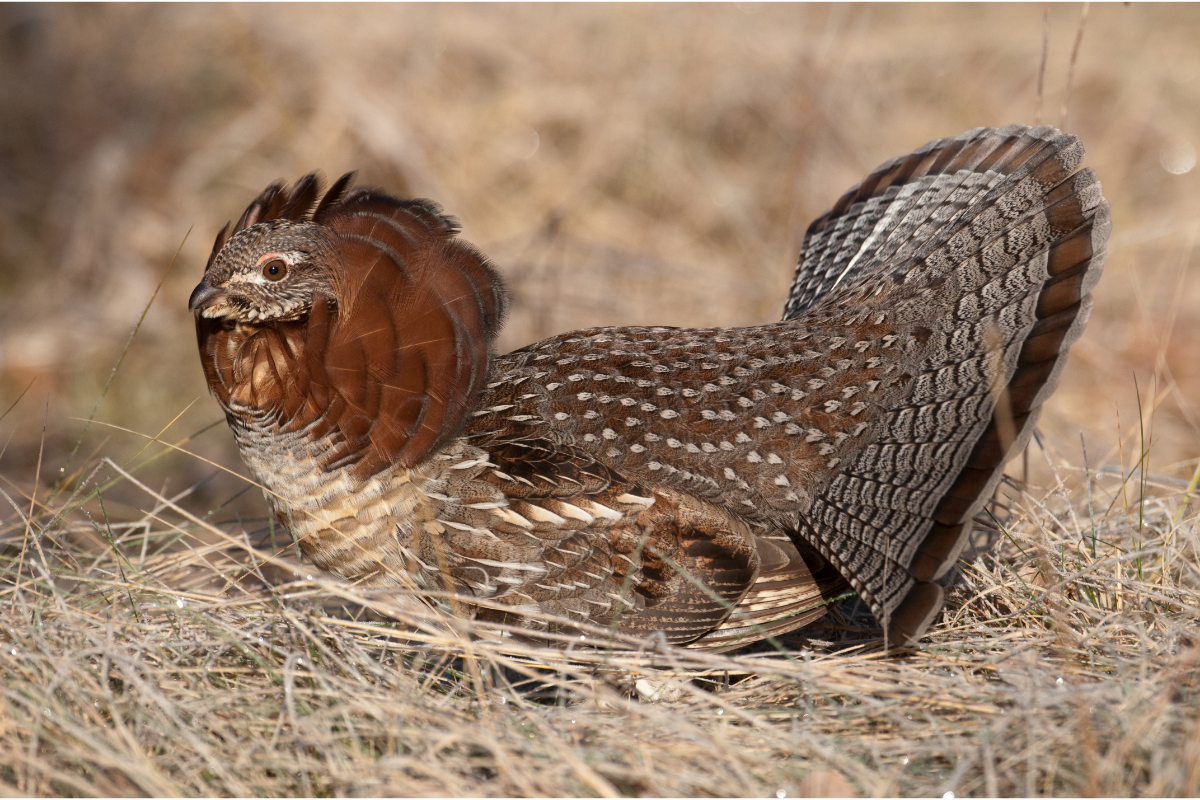In today’s world, obtaining the family Christmas tree involves nothing more than a stop at a store, viewing trees stacked side-by-side in a vacant lot, or retrieving an artificial tree from the attic.
Real “adventure” in obtaining the family tree involves going to a Christmas tree farm and wandering amongst growing trees until one is spotted which strikes the fancy. By way of sharp contrast, during my boyhood virtually everyone cut their own tree, and often it involved an outing in which the entire family participated.

Mistletoe
Our family search for the ideal tree, always a pine, began at Thanksgiving with the opening of the rabbit hunting season. While afield my father and I would give every tree of the right size and promising shape a visual “once over,” and those with considerable potential would be filed away in our minds as “possibles” come tree-cutting time. When the big day arrived, a Sunday afternoon about ten days to two weeks before Christmas, the whole family would pile in the car and head out to cut a tree. For us kids there was a sense of great excitement, and Mom, who enjoyed anything and everything connected with Christmas with all the eagerness, anticipation, and joy of an eight-year-old, fell right into the spirit of things.
Yet tree cutting was but one part of a wide-ranging Christmas decorating process, virtually all of which involved using materials from nature. Taking this approach offered three distinct advantages. Decorations from nature were lovely, cost nothing and procuring and preparing them produced wonderful moments of family togetherness. The process of making such earthly Yuletide decor naturally begets familial bonding. I look back on those Yuletides of yesteryear with a great deal of longing. Perhaps indulgence in some natural Christmas nostalgia will evoke similar fond memories for others or inspire a contemporary approach to the season. It might also be noted that focusing on what might be styled “a natural Christmas” gets you out-of-doors, provides an ideal sidelight to whatever type of hunting you might be involved with at this season of the year and the resultant decorations look far better than anything from store shelves. This all costs nothing but gumption in the gathering process. With that in mind, here’s a bevy of suggestions for holiday decorating joy straight out of experiences from my boyhood and beyond.
*Mistletoe was a must, and it loomed large indeed in Mom’s overall decorating scheme. That in turn proved a boon for me, because I loved the entire process involved in obtaining quantities of it sufficient to satisfy her needs. In some places, mistletoe grows low and can be gathered by the sack full with ease. Take a winter canoe trip down a low country river in either of the Carolinas, for example, and you’ll see big bunches of the leathery green parasite, loaded with waxy white berries, adorning one tree after another. It will be at a height where you can ease a canoe under it and pick enough to spawn a major outbreak of kissing fever in no time at all.
In the Great Smoky Mountains where I grew up, on the other hand, mistletoe seems to be comparatively scarce, and invariably when you find an oak, maple, or maybe a honey locust bedecked with a few clumps, they will be way up in the top of the tree. However, far from being a cause for dismay during my boyhood, that remoteness, scarcity and inaccessibility presented precisely the sort of challenge a teenager welcomed.
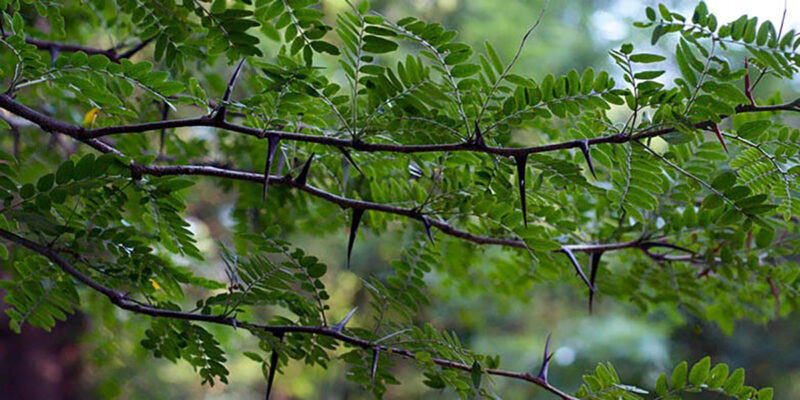
Deceptively beautiful honey locust tree.
Basically, there were three ways to procure mistletoe. Occasionally it was possible, provided one had sufficient agility and a virtual absence of fear (or common sense) to climb a tree to obtain mistletoe. Such challenges, especially the delicious hint of climbing danger, something which always appeals to a teenage boy, made that approach to obtaining mistletoe quite interesting. A second method, more commonly employed for the simple reason that finding a climbable mistletoe- bearing tree occurred infrequently, was to throw rocks or sticks at the clumps of greenery. Sticks with some heft and size to them were preferred for the simple reason they were far more likely to produce satisfactory results than merely chunking rocks. Donnicks required too much accuracy, whereas a stick of appreciable size cut a fairly big swath as it flew through the air.
My favorite tactic, however, involved shooting the mistletoe out. A tightly-choked shotgun would sometimes do the trick, although if the mistletoe was very high in a tree even the most closely patterned shot strings would spread out enough to result in tatters of mistletoe rather than sizeable clumps. Moreover, should you be lucky enough to shoot out a fairly nice-sized piece chances were it would have pellet holes all through the leaves.
On the other hand, a .22 rifle in the right hands was perfect. It required expert marksmanship to cut away a nice bunch of mistletoe right where it joined a tree limb, but that challenge was no small part of the fun. The “sport” became even more delightful if three or four boys were involved, each trying to outdo the other in demonstrating their shooting prowess.
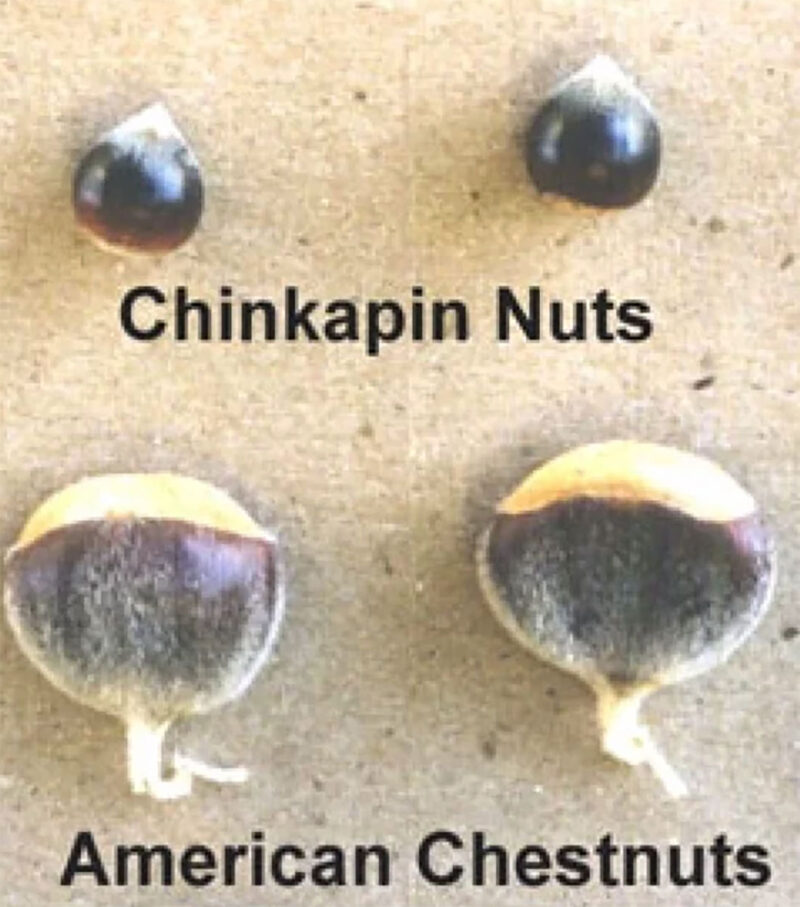
Chinquapin Nut, about the size of the tip of your finger. (Casada Caveat: don’t mistake the poisonous Buckey for the Chinquapin!)
My decidedly modest armory, which consisted of a single-barrel Savage Model 220A shotgun, a well-worn Daisy Red Ryder BB gun, and a slingshot, didn’t run to the luxury of a .22 rimfire. However, a good buddy did own one and he was quite happy for all of us to take turns shooting it so long as each of us sprung for our own ammunition. Since .22 long rifle loads cost only a penny each in those days (less if you bought a box of 100 or if several boys pooled resources to purchase a “brick” of 500), even mountain boys who were anything but flush could afford enough cartridges to have real fun.
Our normal mistletoe-gathering days came on a Sunday afternoon a week or two before Christmas. You couldn’t hunt on Sunday and by that point in December one or more of our mothers would have mentioned needing some of this prime Yuletide decorating material. That was all the excuse we needed to head for the woods. Those of us who were involved, a group who rabbit hunted with my father and his best buddy on every possible occasion, had already been keeping a keen eye out for mistletoe in much the same fashion as Daddy always sought an ideal Virginia pine for our family tree. Accordingly, we always knew where plenty of mistletoe was available.
When several of us got together, it made for an afternoon of great fun. We would take shot about, tease one another about misses, brag about hits and indulge in all sorts of verbal foolishness connected with thoughts of getting whatever girl happened to be the apple of our respective eyes at the time under some mistletoe.
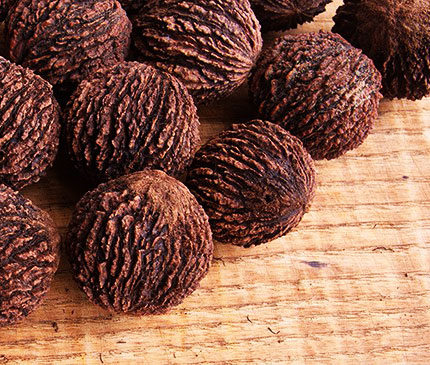
Black Walnut
I remember precious little in the way of positive developments in the latter context, but I do fondly recall Momma’s pleasure and her special knack for making me feel good when I came home bearing a nice batch of mistletoe. She would make over the fresh greenery as if it was almost equivalent to gifts of the Magi, decorate it with red ribbon and hang it at two or three likely places in the house. For a mountain boy of the 1950s it was an innocent, intriguing and flat-out joyful experience.
*Along with a plentitude of mistletoe, Mom always wanted a few two- or three-foot long clippings from honey locust trees. She disarmed the plentiful thorns by tipping each of them with a colorful gum drop, thereby making an unusual, attractive decoration. If a few of the gum drops mysteriously vanished thanks to the depredations of youngsters with a sweet tooth, Mom quietly replaced them and, in keeping with the spirit of the season, never uttered a word about missing candy.
*Wreaths and table centerpieces made from natural materials such as hazelnuts still in the husk; cones from hemlocks, white pines and other types of evergreens; sweet gum balls; sycamore balls; milkweed pods; old wasp nests; small bird nests and the like were standard decorative features of Christmas. The sycamore and sweet gum balls could also be dipped in a flour-and-water mixture and then dried to give them a miniature snowball-like appearance. Alternatively, they could be painted silver or gold. These carefully crafted items gave Momma a great deal of pleasure, always drew favorable comments from visitors and added appreciably to the overall festiveness of our house at holiday time.
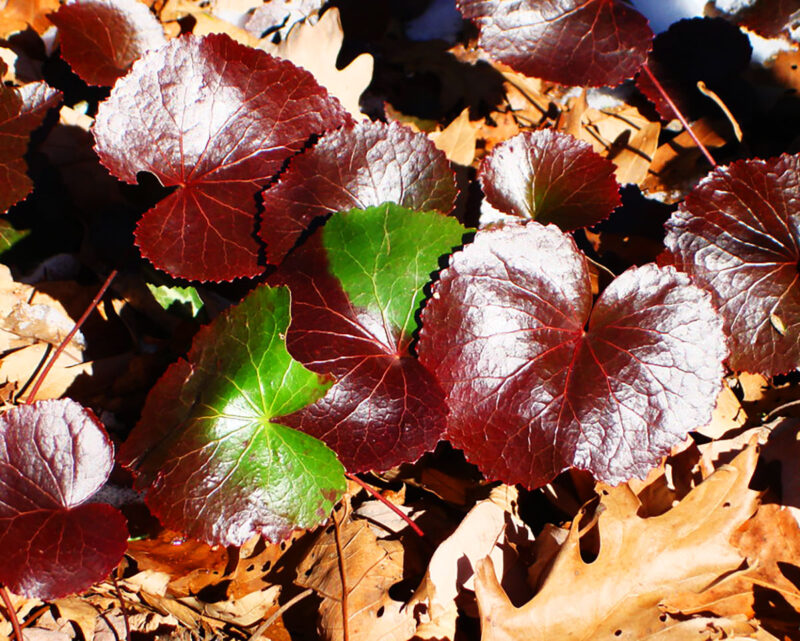
Galax Leaves
*Another approach to similar decorations focused exclusively on nuts—hazelnuts, black walnuts, hickory nuts, acorns, butternuts and chinquapins. For visual variation, Mom always included some hickory nuts and acorns still in partially opened hulls.
*Galax leaves were popular for wreathes, table decorations, wall hangings and mantle adornment. During winter months, galax leaves turn wonderful hues of red, purple, maroon and magenta along with their basic green. Leaves also have a noticeable sheen and keep well for a couple of weeks. Galax is so attractive that at one time hardy Appalachian folks, always looking for a way to earn a bit of cash money, would gather it for wreathes or to form in great clusters to sell to city folks.
*She-holly (holly is one of a handful of trees, with persimmon being another one, which comes in male and female forms) with its bright red berries was always an important part of decorating for Christmas. It was fashioned into door hangings, used as edging around doors and windows, spread atop mantles, featured in decoration with candles and more. Looking for a berry-laden tree was a standard sidelight to the search for a perfect Christmas tree in our family outing.
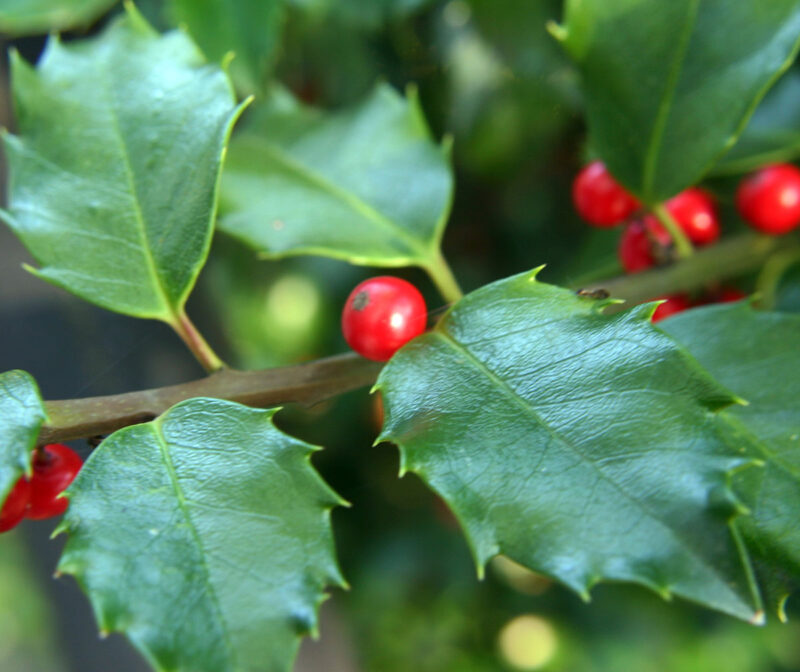
American holly branch. Casada Pro Tip: wild Hollys don’t have clusters of berries; tell-tale sign they are hybrids bred for landscaping.
*Cedar was another widely used evergreen, and cutting cedar branches, ideally adorned with plenty of the tree’s small blue-green berries, to use with holly, pyracanthia, nandenia, bittersweet or other berry-laden plants was another means of turning to nature at Christmas. Daddy would have no part of a cedar tree for use as our family tree. Although cedars often have ideal shapes, he maintained that dealing with them, given the way they stuck and pricked the skin, just wasn’t worth the trouble. On the other hand, he readily acknowledged that using cedar for other decorative purposes brought a pleasing aroma to the house.
*Running cedar (also known as ground cedar and by other names) likewise found its decorative place. This ground cover, found widely throughout the mountains, was easily gathered. It almost always occurred in large patches. Sometimes they covered a half acre or more.
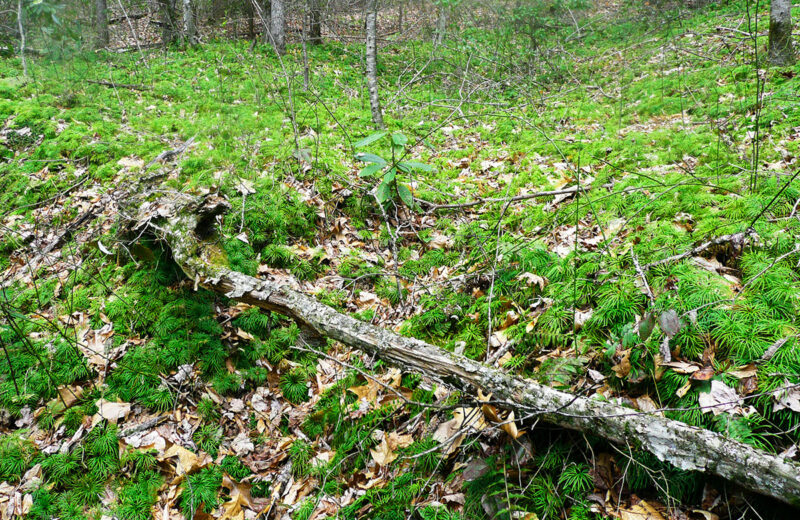
Running Cedar
*Making garlands of popcorn for the family tree using popcorn we had grown, shucked, shelled, and popped was a favorite seasonal ritual. It provided double fun because some of the popper kernels would be salted and buttered. Thus you could snack while stringing popped kernels using a needle and strong sewing thread. Usually a large quantity of corn would be popped and some would be blended with molasses to make popcorn balls. This was a marvelously messy process, and never did finger-licking seem more enjoyable.
*Sometimes non-edible parts of game animals were fashioned into centerpieces for the festive holiday table. For example, deer sheds blended with greenery worked quite nicely in this regard, and a pair of wild turkey fans placed end-to-end made a nice oval atop which you could place she-holly or other berry-bearing greenery. Wall hangings featuring small deer sheds, turkey feathers, whitetail tails, grouse feathers, honey locust pods and the like were also possible.
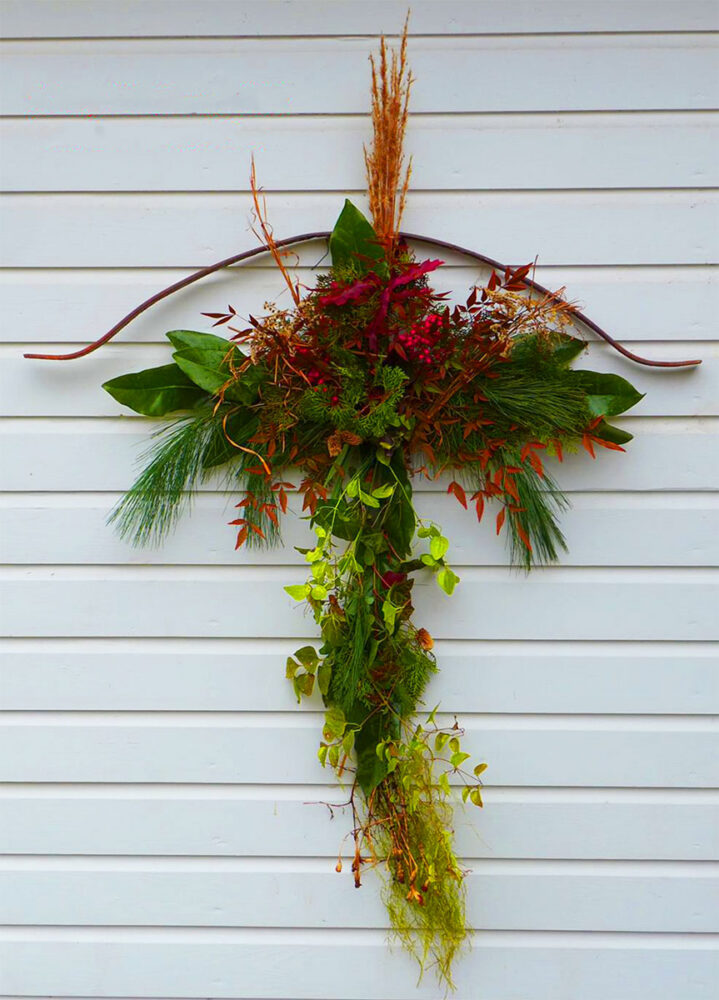
Casada Christmas Cross PHOTO AND CROSS BY DON CASADA
The foregoing offers but a sampling of items we used (not the deer- and turkey-related items, since both were extremely scarce in the Smokies of the mid-20th century, something which is today no longer the case) for holiday decoration. To the list could be added the limbs from white pines and hemlock which always figured prominently in the season, although thinking of the fate of the hemlock as it faces widespread damage by the wooly adelgid brings sadness to a season of gladness. One has to wonder if it is fated to go the way of the lordly American chestnut, which in its own right was an integral part of Christmas a century ago.
In yesteryear, as these approaches to decorating suggest, mountain folks turned straight to nature’s rich bounty for much of their Christmas preparation. The end result was simple beauty and a seasonal connection with the outdoors and the good earth. That link was an integral and important part of mountain life throughout the year, and it was only logical and appropriate that it be incorporated into the celebration of Christmas.
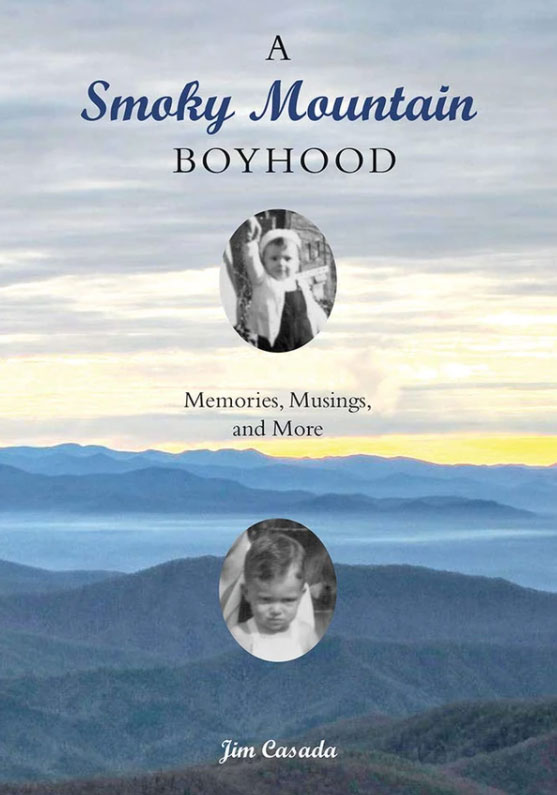 Born in Bryson City, North Carolina, Jim Casada has had a long career as a teacher, author, and avid outdoorsman. He grew up in a time and place where families depended on the land and their community to survive. Many of the Smoky Mountain customs and practices that Casada reflects on are gradually disappearing or have vanished from our collective memories. In A Smoky Mountain Boyhood, Casada pairs his gift for storytelling and his training as a historian to produce a highly readable memoir of mountain life in East Tennessee and western North Carolina. His stories evoke a strong sense of place and reflect richly on the traits that make the people of Southern Appalachia a unique American demographic. Casada discusses traditional folkways; hunting, growing, preparing, and eating wide varieties of food available in the mountain region; and the overall fabric of mountain life. Divided into four main sections—High Country Holiday Tales and Traditions; Seasons of the Smokies; Tools, Toys, and Boyhood Treasures; and Precious Memories—each part reflects on a unique and memorable coming-of-age in the Smokies. Buy Now
Born in Bryson City, North Carolina, Jim Casada has had a long career as a teacher, author, and avid outdoorsman. He grew up in a time and place where families depended on the land and their community to survive. Many of the Smoky Mountain customs and practices that Casada reflects on are gradually disappearing or have vanished from our collective memories. In A Smoky Mountain Boyhood, Casada pairs his gift for storytelling and his training as a historian to produce a highly readable memoir of mountain life in East Tennessee and western North Carolina. His stories evoke a strong sense of place and reflect richly on the traits that make the people of Southern Appalachia a unique American demographic. Casada discusses traditional folkways; hunting, growing, preparing, and eating wide varieties of food available in the mountain region; and the overall fabric of mountain life. Divided into four main sections—High Country Holiday Tales and Traditions; Seasons of the Smokies; Tools, Toys, and Boyhood Treasures; and Precious Memories—each part reflects on a unique and memorable coming-of-age in the Smokies. Buy Now
